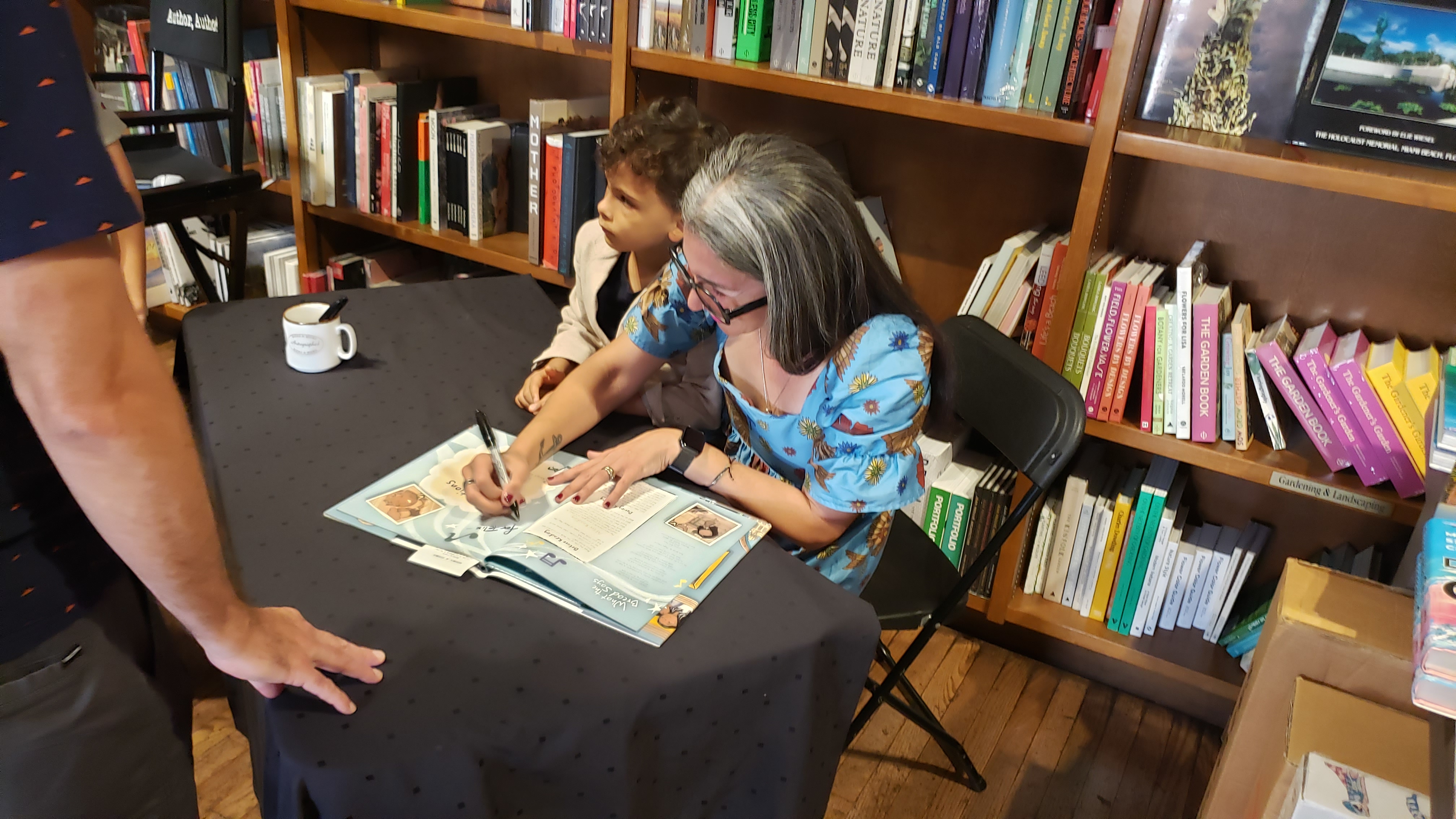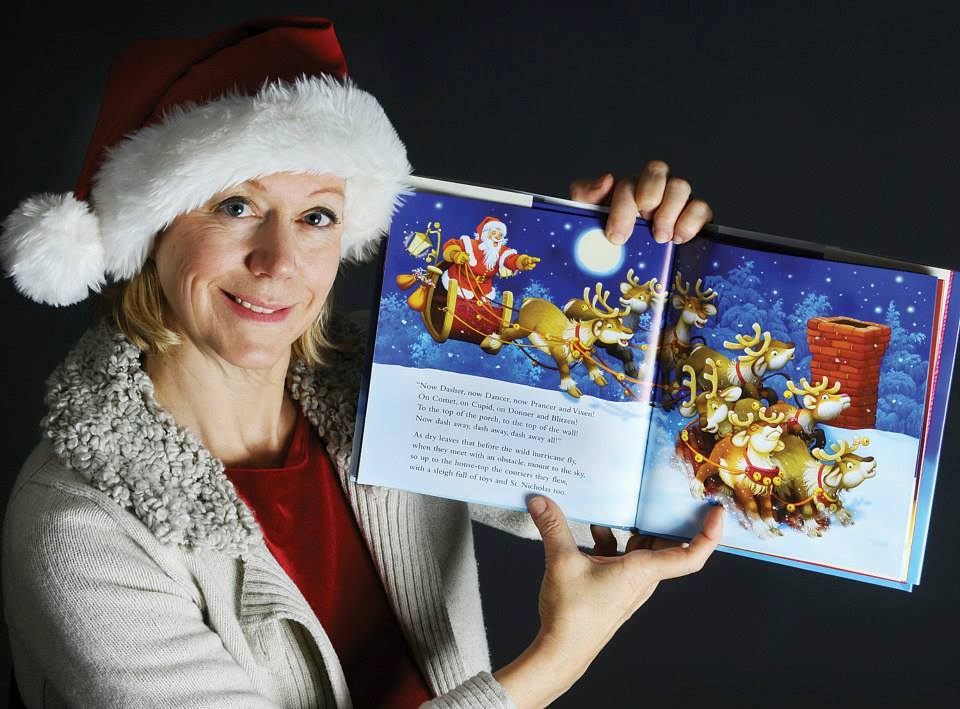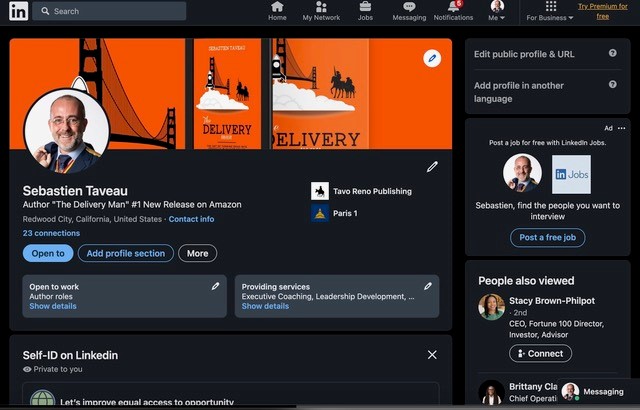If publishers had magic wands, some would surely use them to transform every one of their authors into influencers. That’s because influencers sell books.
Short of magic, there are steps publishers can take to help their authors become influencers. They begin with an understanding of what being an influencer entails with the aim of discovering where and how they can position authors for success. Challenges will inevitably arise, but savvy publishers tap help-at-hand resources to help their authors succeed.
What Makes an Influencer?
“Honestly, I never intended to become an influencer,” says author and cover designer Jamie Dalton. “I feel weird calling myself that.”
Even so, Dalton attributes much of her business success to the TikTok following she built from scratch. In her first year on the platform, she focused only on her book cover design business since she had published no books yet.
Now, she gets her cover assignments almost exclusively from TikTok.
“When I was ready to start publishing, I already had an audience,” she says. “My first published book hit 100 reviews very quickly, and that’s without having any videos go viral. Over time, it’s only multiplied as I’ve continued to grow my account and focus on not just my own books but also on connecting with my audience with books that I enjoy.”
Success as an influencer has much to do with validation, Polyverse publisher Louis Force Torres says. Before the digital publishing revolution, a title was validated because a publisher took it on. But in today’s flooded market, Torres says, “There is no validation of hours and resources by a third party.”
Instead, many readers now look to social media to assess a book’s worth. “The idea is to validate yourself through the lens of the internet,” he says. “The more people see of you and your input about your work, the more they can trust you are real, and the more willing they are to read what you have to say.”
Positioning Authors
At Polyverse, Torres encourages all his authors to become influencers. “There has to be an answer to the question, ‘Why would someone who doesn’t know you pick up your book?’” he says.
Not that becoming an influencer is easy. Torres suggests authors start by engaging with other authors, writers’ groups, and book hangouts in the virtual space. “Take advantage of #followforfollow concepts that encourage new influencers,” he says. “Many people will exchange a like or a page follow to help you climb. Just do a little research and become active. Don’t be afraid to talk about your project with passion.”
Polyverse encourages its authors to like each other’s content and review each other’s books. “If they are introducing contacts and readers to other authors, then that translates to more sales and more presence on social media,” Torres says. “People who like to read often explore similar topics, voices, and authors. So why not build on that?”
PR by the Book publicist Marika Flatt suggests authors create a reader avatar based on what their readers are reading, watching, and listening to. That way, she says, “They can grow their social media platforms with creative posts that engage their demographic.” She recommends her clients put their time and energy into the two main platforms that move the needle for them. “It all depends on the author and their genre or topic,” she says. “Facebook and Instagram might shine for novelists, parenting, and children’s books, while LinkedIn is the ticket for business books.”
Influencing is all about connecting and building trust with the right audience, Dalton says. “Work on connecting with your target audience as a fellow reader, and let social media be fun,” she says. “Never spam them. Build the relationship.”
At Cardinal Rule Press, marketing manager Mandy Bush points to the influencer success of their author Vanessa Garcia. A screenwriter, playwright, novelist, journalist, and activist in the Cuban-American community, Garcia has a strong presence on Instagram.

Author Vanessa Garcia at a book signing for the release of her fall 2023 release of What the Bread Says at Books & Books in Coral Gables, Florida.
“Vanessa has the personality that draws you in,” Bush says. “She is personable, relatable, and has a ready smile. She connects with her community by showing them the values in her life and what she holds dear.”
Cardinal Rule supports Garcia’s efforts by promoting her within their own community. “We are a publisher that doesn’t stop with our authors once their book is published,” Bush says. “We truly want to see them succeed for the rest of their lives.”
Traditional approaches can work to promote authors as influencers, too. From a 2012 media release author Pamela McColl wrote about her book depicting a smoke-free Santa Claus, she gained instant recognition. “AP [coverage reached] media outlets around the world,” she says. “The book was discussed by Stephen Colbert and on ‘The View.’”

Author Pamela McColl’s book depicting a smoke-free Santa Claus gained instant media recognition.
Having become an influencer, McColl recently used LinkedIn and Twitter to pitch a new project to other influencers. “Through an outreach on Twitter, my book landed in the book review section of the national magazine Woman’s Day in full color,” she says. “Through LinkedIn, my book ended up as a half-page, full-color story in the national magazine Woman’s Weekly. Both of these were cold calls made to influencers I spotted on social media platforms.”
African American Literature Book Club president Troy Johnson became an influencer on a platform he created. “I have helped well over 1,000 authors reach an audience and increase book sales through my website aalbc.com, which is dedicated to books written by, or about, people of African descent,” he says. Opened by over 50,000 people each month, Johnson’s newsletter supplements the site.
With all the emphasis on feeding social media algorithms, Johnson encourages publishers not to ignore more traditional ways of helping authors reach an audience. These can even lead to additional revenue streams. “Being a recognized platform has allowed me to monetize the site by selling advertising,” he says.
Benefits and Challenges
Author-influencers can have a direct impact on sales. And as their following grows, other monetizing may follow. But to reach that level, many have hurdles to overcome.
“We hope that all publicity and promotion equate to book sales, but that’s not realistic,” Flatt says. “Sometimes it does, and we all do the happy dance. Other times, it opens up other doors for an author, such as an invitation to speak.” With this increased media presence, other opportunities may present themselves, Flatt says, including the potential for monetizing with outside brands.
Face-to-face interactions are key to this sort of growth, Torres says. “We are social beings. Follows, likes—they are good. But being able to turn that into a podcast interview or reading event, that is better.” At some point, the most successful author-influencers become validators themselves. “That is when people who don’t know you listen to your message,” he says.
But trying to reach that status can be daunting. “Just as with self-published books, there is a tidal wave of influencers,” Torres says. “How do you stand out?” It helps to keep expectations realistic. Getting started, authors may feel awkward. “But really, it is about being yourself and caring about your message,” he says.
Dalton agrees. “The biggest mistake I see is the focus entirely on trying to sell instead of using social media to connect with and grow your target audience,” she says. “No one wants to be sold to all the time.”
Understanding the algorithm is important, too, especially on TikTok. If an author starts out posting about books and then suddenly switches to cat videos, the algorithm gets confused.
“You don’t have to be completely niched down,” Dalton says. “That’s incredibly boring. [But] if you at least warm up your algorithm to posts that work well for selling and do it as a mix of your own books and books your target audience will also enjoy, you will be much more successful.”
Dalton avoids paid sponsorships, and she’s careful about the endorsements she makes. “I hold the content I create to my brand,” she says. “I don’t want to make any promises to authors to promote their book or product if I end up not really caring for it.”
Going viral is never her goal. “Viral videos mean people outside of my target audience are suddenly seeing and following me,” she says. “It also tends to mean that more negative comments show up, and I take the time to keep my FYP (For You Page) and content very positive.”
Help at Hand
There is no magic wand for turning authors into influencers. But there is help at hand.
Author-publisher Sebastien Taveau worked with a personal brand agency to unify messaging for his book The Delivery Man. The social media strategy involved a two-week launch blitz followed by regular engagement. “It is important to be thoughtful on the approach and deliberate in the consistency of the message,” he says. “Going in without a strategy can lead to a turnoff of the audience.” Pitfalls can include too many posts, too much sales pitch, and not enough focus, he says.

Author-publisher Sebastien Taveau worked with a personal brand agency to unify messaging for his book The Delivery Man.
Even if publishers lack the budget for professional help with scheduling, content creation, and placement, they can assist authors in focusing their efforts. “Help them extract two or three key messages from their book that can become the cornerstone of their communication strategy to be a specialized influencer,” Taveau says. “This is when you can generate revenue, by being deliberate in a core expertise or segment.”
Authors can also tap the power of other influencers, as Paul Katz did for his book Good Influence, a guide to leveraging the power of influencers to create change. As CEO of Entertain Impact, Katz has engaged influencers such as John Legend, Itzhak Perlman, Desmond Tutu, and Ziggy Marley to promoting causes on Twitter, Instagram, and YouTube. Success comes from putting in the time, being authentic, being strategic, and thinking long term, he says.
Knowing the challenges publishers face, Flatt created an Author to Influencer Accelerator, available to IBPA members at a discount. “As we all know, the market is saturated,” she says. “So the challenge is rising above the noise. It can be overwhelming for authors to take the steps needed, which is why we developed the accelerator.” Flatt says the program helps authors maximize their brand and reach, with a focus on preparation, platform development, product, planning, and promotion. “You don’t have to have a huge following,” she says. “You just have to reach the right people.”
The Real Thing
If there’s any magic in helping authors become influencers, it’s in being authentic. For publishers, that starts with understanding what it takes to become an influencer. It also involves positioning their authors for success and tapping into help at hand to help authors navigate the challenges.
“Authors sometimes struggle to balance both the writing life and the influencer life,” Bush says. “Some aren’t able to do this well, if at all. But when an author finds that balance and does it well, it shows.”
In that balance, an author’s authenticity shines. As people take notice, an influencer is born.
Deb Vanasse is the author of several traditionally published books, her most recent being Roar of the Sea, a 2022 Oregon State Book Award Finalist. In addition to her work as a freelance editor, she is an author-publisher at Vanessa Lind Books.